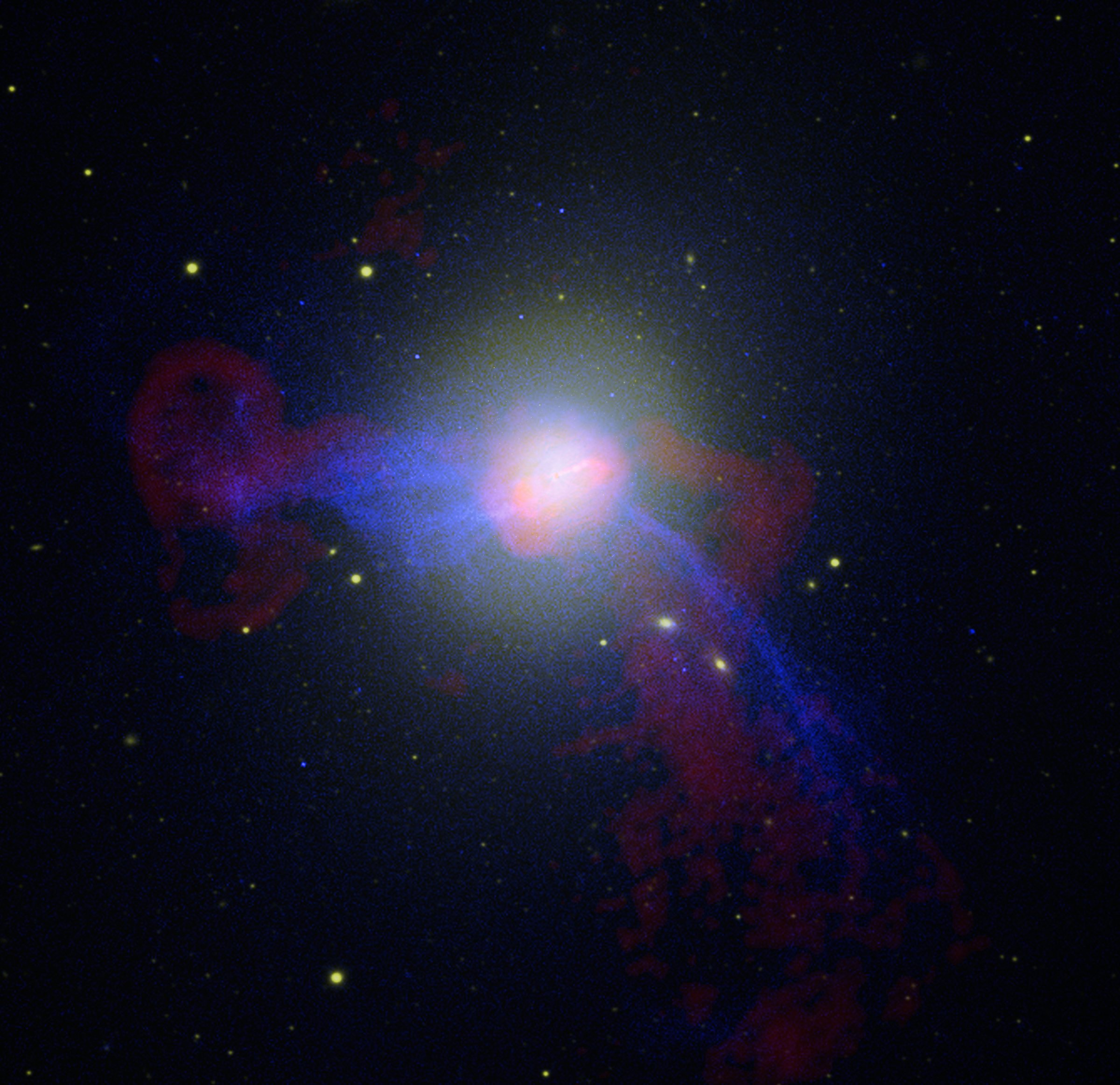
Astronomers have known about celestial objects called globular clusters for centuries. They’re collections of maybe 100,000 stars, tightly bunched into a roughly spherical configuration, which orbit the central part of the Milky Way and other galaxies in a relatively lazy fashion, like a swarm of laid-back bees.
But observers have spotted one such cluster that’s behaving extremely strangely. This one is located in the vicinity of M87, a gigantic, blob-shaped galaxy—at least ten times as massive as the 300 billion star Milky Way—which lies about 53 million light years from Earth. The cluster doesn’t seem to be orbiting, and it’s anything but lazy: instead, it’s speeding in our direction at a blistering 2 million m.p.h., (3.2 million k/h) as though it’s been flung from its home galaxy like a bullet—except much, much faster. “We’ve found speeding, runaway stars before,” says Harvard astronomer Nelson Caldwell, who co-discovered this bizarre object. “But this is the first time we’ve found a runaway star cluster. We’re not really sure what’s going on.”
The best explanation, Caldwell believes, is that the globular cluster wandered too close to a pair of giant black holes thought to lie in the core of M87. The complex gravitational interaction between the cluster and the black holes could have provided the gunshot force to fling it into space. “It’s plausible,” says Caldwell, “but not entirely satisfying.”
One problem, he explains, is that the existence of both black holes in M87 is by no means proven, and a single one would not provide the necessary gravitational kick to account for what the astronomers have observed. What’s more, the globular cluster would have had to have approached to within just a few light-years of the black holes to pick up such enormous velocity. If it came that close, however, the enormous gravity of the holes should have stripped away a lot its stars, yet the cluster appears to be zipping through space reasonably intact.
But if you dispense with the black holes theory, there aren’t a lot of alternatives left—at least not terribly plausible ones. It’s possible that the globular cluster is actually falling into M87 from the other side, speeding up under the giant galaxy’s powerful gravity. In that scenario, we’d be spotting the cluster right through the galaxy—not at all impossible, although the high speed would still be hard to explain.
“I’ve spent a lot of time talking to other astronomers,” says Jay Strader of Michigan State University, a co-author of a paper that will appear in The Astrophysical Journal describing the mystery object, “and most prefer the black hole explanation. But I still think it’s pretty uncertain.”
A more definitive answer could come if Strader, Caldwell and their co-authors can get some observing time on the Hubble Space Telescope. “If we got HST images,” says Caldwell, “we might be able to resolve individual stars within the cluster, which would help us pinpoint its distance more precisely.” That, in turn, would tell them what side of M87 the globular cluster is on, and thus whether it’s falling in or shooting out. They’ve applied for Hubble time, and expect to find out in a few months whether they’ve gotten it.
One thing we needn’t worry about is whether the cluster—which appears to have us in its crosshairs—could cause us any harm. First of all, even at its current speed, it will take more than 17.5 million years to get here. And should its aim be true and it collide with the Milky Way, it would pass right through since galaxies and clusters are made of far more empty space than they are matter. The cluster is thus a wonderfully harmless riddle that we have all the time in the world to figure out.
More Must-Reads from TIME
- How Donald Trump Won
- The Best Inventions of 2024
- Why Sleep Is the Key to Living Longer
- Robert Zemeckis Just Wants to Move You
- How to Break 8 Toxic Communication Habits
- Nicola Coughlan Bet on Herself—And Won
- Why Vinegar Is So Good for You
- Meet TIME's Newest Class of Next Generation Leaders
Contact us at letters@time.com